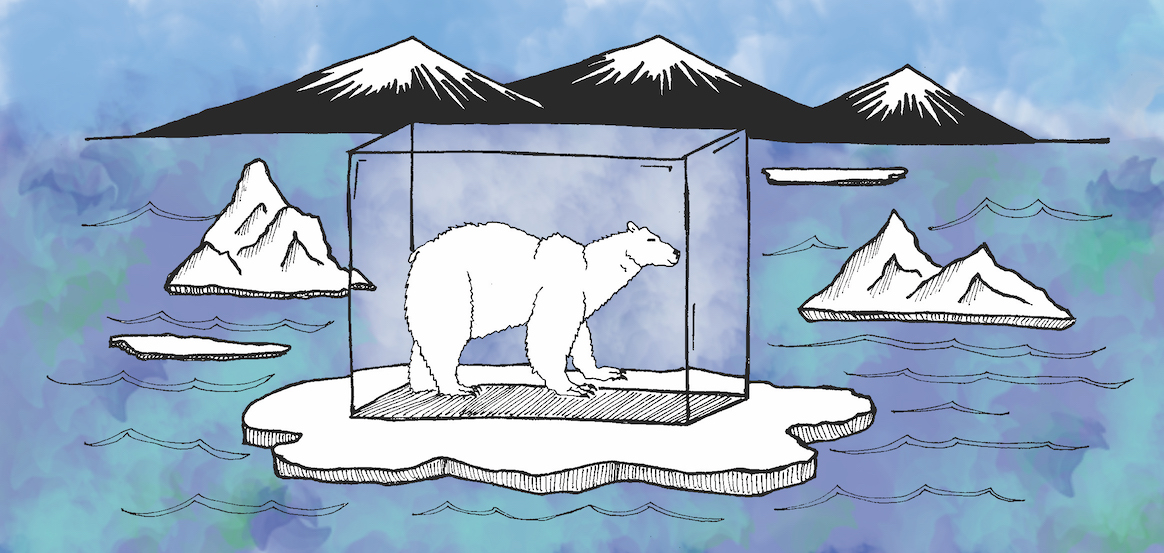The Bowdoin polar bear: origins in a history of exploration
November 1, 2019
Everyone remembers something different about their first time on Bowdoin’s campus. Maybe it’s the stress of move-in day, the excitement of that one soccer game you watched as a prospective student or even running through the quad as a little kid on a sunny summer day. For me, it’s walking into the Peter Buck Center for Health and Fitness and coming face to face with a giant taxidermied polar bear.
You know which polar bear I’m talking about; it’s smack dab in the middle of the Buck Center, and if you’ve ever walked from the Sills Hall side of campus toward Smith Union, you’ve undoubtedly had the same encounter. I’ll admit that as a prospective student I was a little terrified when I first saw the bear, but to this day, whenever I walk past, I’m reminded of my first time on Bowdoin’s campus.
And when I think back to this moment—strangely the most memorable experience from my visit to Bowdoin—I wonder about the story behind this bear. Where did it come from? How did it end up in the Buck lobby? And why is the polar bear our school mascot to begin with?
Let’s start with some dates.
On April 6, 1909, Robert Peary, Class of 1877, discovered the North Pole. His discovery brought great pride and prestige to the College, subsequently influencing the alumni board’s choice in mascot. At an Alumni Association banquet in New York four years after Peary’s discovery, the polar bear was selected as Bowdoin’s mascot.
Directly following this meeting in New York, then Bowdoin athletic director Frank Whittier drafted a letter to Donald Baxter Macmillan (another Bowdoin alumnus, Class of 1898, and arctic explorer) requesting a “fine, stuffed polar bear skin” to display in the College’s trophy room.
May 13, 1915 marks the exact date that Macmillan, with the help of a local Inuit hunter, shot and killed Bowdoin’s legendary, now-taxidermied, polar bear in Greenland. Macmillan planned to return to Brunswick as quickly as possible, but the polar bear and the rest of the expedition team were forced to remain in Greenland far past the anticipated departure date and his ship did not return for two years. Once they finally returned to Bowdoin, the bear was not in nearly as good condition as the team had hoped, so expert taxidermists manipulated the skin once the bear made it to Maine. The taxidermists eventually decided on a simple pose so the bear would stand proud in its case.
The polar bear was gifted to President Kenneth C.M. Sills at the commencement dinner in 1918 and has stood in its case for over a century—a visible reminder of Macmillan’s expedition to Greenland.
Because of the polar bear, Buck lobby is rich in history. Buck is home to a polar bear that walked across Arctic ice caps more than a hundred years ago and represents perseverance, strong will and determination.
Of course, a mission like this is unlikely to be condoned by the College today and is instead rooted in something both meaningful and enchanting. When I reflect on my first Bowdoin experience, I think my first encounter with the polar bear was my mind’s subconscious way of telling me that Bowdoin had an incredible history I would eventually discover for myself.


Comments
Before submitting a comment, please review our comment policy. Some key points from the policy: